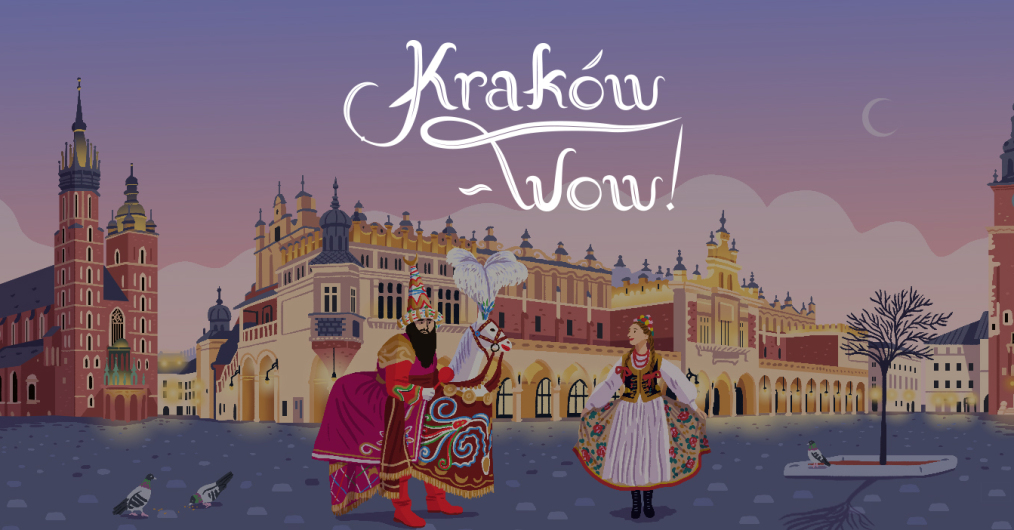Wawel tickets official site: bilety.wawel.krakow.pl
"Kraków-wow" project
New Online Collection
Wawel Royal Castle and Selected Works from Its Holdings Are Part of a New Online Collection
The Kraków-wow project guarantees a fascinating virtual journey through Krakow – the Polish capital of kings and UNESCO World Heritage Site. Thanks to cutting-edge technology, you can examine the smallest details of the works of art. Kraków-wow encompasses the collections of thirteen Krakow cultural institutions, including a total of fifty exhibitions and some 2,000 objects, among them the Wawel armour of the teenaged Sigismund Augustus in 3D. Thanks to Street View tools, you can also take a virtual tour of the Castle’s Royal Private Apartments and State Rooms, and take a peek into the mysterious Dragon’s Den. Indeed, for the Google project, our specialists have prepared an extraordinary story about the Dragon illustrated with surprising audiovisual materials.
The virtual Kraków-wow project includes 145 objects selected by curators from the Wawel collection, as well as a stroll around the Wawel Hill.
“The hallmark of the project presenting Wawel’s treasures in Google Arts & Culture has, is course, the Wawel Dragon. As it turns out, it is the most iconic symbol of Krakow and one of the most frequent Google searches by Internet users in the context of the city. This doesn’t surprise us at all, which is why we decided to prepare something extra special for the Google virtual museum audience – an unusual story about the Wawel Dragon, which became the subject of in-depth archaeological and anthropological research by Magda Młodawska and Prof. Michał Kuziak.
This story stirs up emotions and will surprise many visitors who find their way to the Wawel’s Dragon’s Den through Google Arts & Culture,” says Andrzej Betlej, director of Wawel Royal Castle.
This story stirs up emotions and will surprise many visitors who find their way to the Wawel’s Dragon’s Den through Google Arts & Culture,” says Andrzej Betlej, director of Wawel Royal Castle.
Młodawska (Lapidarium and Reserves Department, Wawel Royal Castle) and Kuziak (Warsaw University) present a little-known face of the Wawel Dragon, referencing not only medieval and other ancient sources, but also to contemporary pop culture texts, including Tomasz Baginski’s acclaimed film Dragon (2015) presented as part of the “Polish Legends – Allegro” series. The authors also draw on literary texts devoted to foundation myths of Krakow and the Polish state. “An example is the play Krakus by the Polish Romantic poet Cyprian Norwid, published in 1863. In the legend of the Wawel dragon, Norwid saw the mythical fatalism of Polish history – the evil constantly reborn in it. The poet treated it as a challenge, an appeal for heroism. The dragon, which embodies animalism, materiality, the earthly element, and the dark forces of nature, is defeated in Norwid’s play by the mind and art. “Through the silent hero, Krakus, who throws a harp into the dragon’s den, Norwid changes Kadlubek’s story, in which cunning and deception counted,” write Młodawska and Kuziak.
After leaving the Dragon’s Den, take a virtual tour of Wawel Hill and visit two of the Royal Castle’s permanent exhibitions, the State Rooms and the Royal Private Apartments. We also encourage you to get to know the virtual collection of the Castle and the Wawel treasures shown in tantalizing detail: the armor of the young King Sigismund Augustus in 3D[SP1] , the 16th century tapestries, and drawings and prints which, for conservation reasons, are rarely exhibited.
The Castle’s virtual collection has also been enriched with exhibitions dedicated to selected masterpieces from the Wawel collection: a Torun clock made by Lorenz Wolbrecht, and a painting by Leon Wyczółkowski, lost during World War II, which returned to Wawel in 2021.
Google Arts & Culture’s virtual collection of Wawel art works will be expanded to include more objects and their sensational stories.
The Castle’s virtual collection has also been enriched with exhibitions dedicated to selected masterpieces from the Wawel collection: a Torun clock made by Lorenz Wolbrecht, and a painting by Leon Wyczółkowski, lost during World War II, which returned to Wawel in 2021.
Google Arts & Culture’s virtual collection of Wawel art works will be expanded to include more objects and their sensational stories.
LOG IN
REGISTRATION
